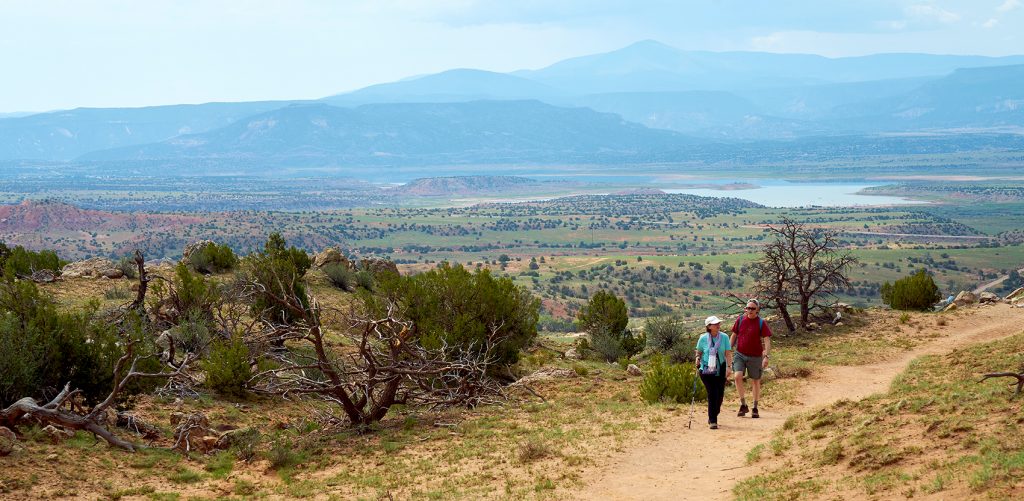Since we live in a desert, we have to be mindful of the stressors our climate places on us. There are steps you can take to prevent dehydration and sunburn when doing outside work or recreation.

How much water does a person need in a day? It all depends on what you are doing (think sweating) and your size. Around 60% of an adult’s body is water. Heat realated hospitalizations and deaths are on the increase in NM and projected to triple in the next 30 years. We can teeter on the edge of a little dehydration and not notice much; thirst might not kick in at the beginning especially as we get older and our kidney function decreases. That is why it is advised to drink water regularly throughout the day. The most common advice is eight glasses (2 liters or a ½ gallon) a day for an adult. You will be getting additional water also by eating fruits and vegetables, which are at least 50% water.
If you are out working or exercising and sweating a lot, an additional three or four glasses of water during that time is in order. Since we also lose salts through our sweat, replacing some of the water with electrolyte packets or Gatorade is important.
Heat is becoming more extreme in the mid Rio Grande watershed. By 2030, 111 days annually are projected to be hotter than 90 degrees. Ninety degrees is considered a temperature when your risk of getting a heat related illness or death increases. What else can you do to protect yourself?
Start by wearing a hat and staying in the shade as much as possible. if you have access to water, wet down your cloths and hat. Note that baseball caps do not shade the ears or neck, which are major sites to develop skin cancer.

Sunscreen also helps. There are many kinds on the market. Two things are critical: 1) buy a brand which is at least rated for 30% protection, and 2) reapply it every two to four hours. Some brands claim that they have all-day protection, but if you are sweating, that may not be the case.
Solid shade from the shadow of a building or a dense group of trees can lower the air temperature by as much as eight degrees as well as keep you out of the sun, so look for shade when out walking or standing to talk with someone. Generally, it is sensible to walk, exercise, and do outside work in the morning or evening when it is cooler and cancer-related ultraviolet (UV) light is less.
If you are out hiking and struggling with the heat, rest by sitting on your backpack or a log to lift you off the hotter ground. Also, don’t be tempted on a hot day to strip down; clothes decrease the loss of water from your skin and reduce the UV ray exposure.
A few last tips for hiking: Always start off with a fully charged phone. A couple of free apps to download may save you from getting lost – ViewRanger, and AllTrails. You have to subscribe to Avenza Maps which is another good one. Also, download the free Red Cross First Aid app onto your phone; it might come in handy, and you won’t have to worry about reception once it is downloaded. It’s a good idea to have some First Aid supplies for yourself or others. Basics to include are band-aids, gauze pads, adhesive tape, moleskin for pre-blisters (those places which are rubbing but not blistered yet), Acetaminophen or Ibuprofen, Benadryl, a knife with tweezers and scissors, waterproof matches, an ace bandage, and iodine tabs for water purification and again some of those electrolyte packets .

